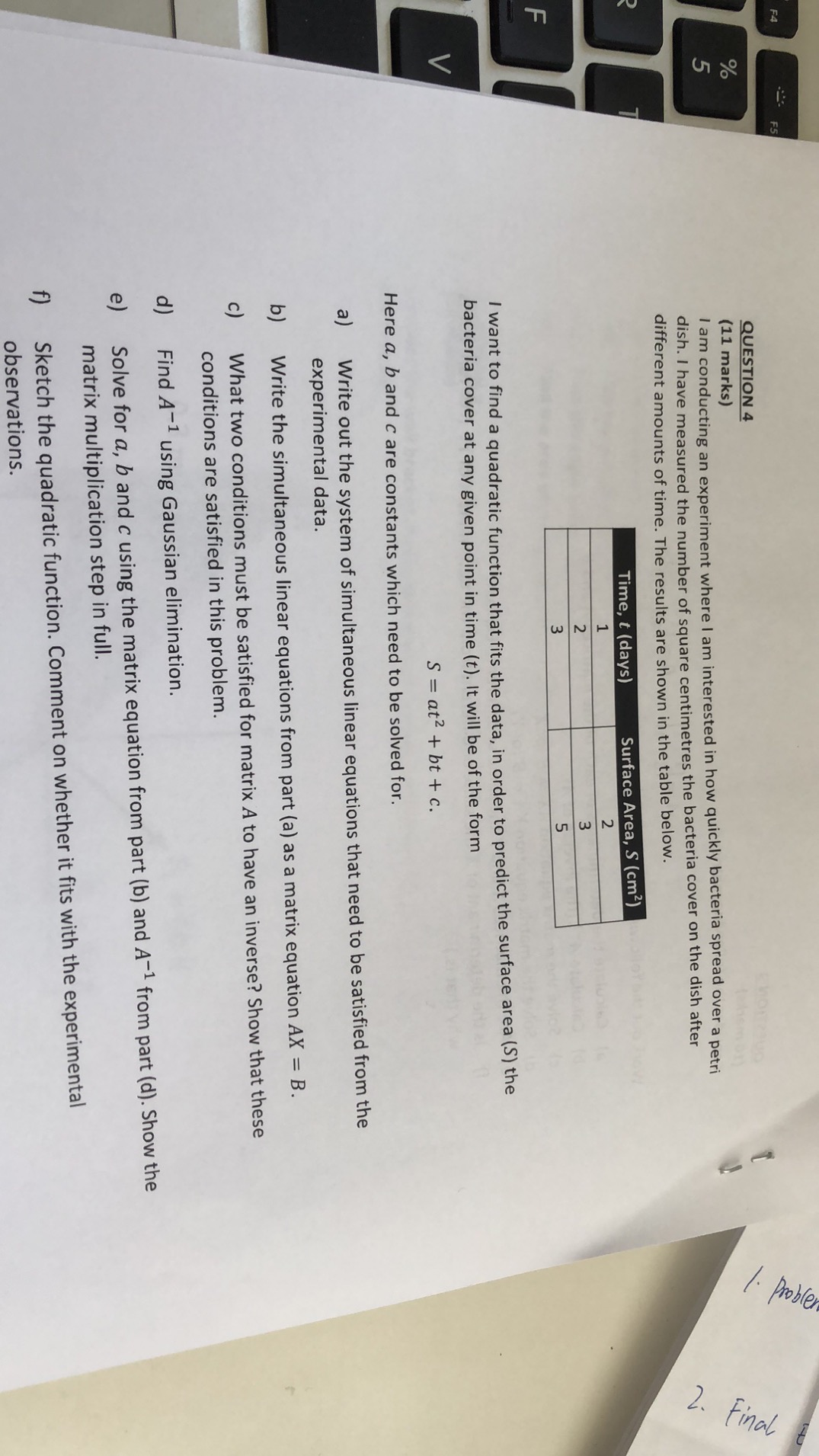hi, can u teach me how to solve these question,thanks
MacBook Air QUESTION 1 19deemed | 6idealA 8 zuluals) yosbuboin! | 0018XM (9 marks) Consider the vectors u = 4i - 2j, v = -5i + 1j - 1k, w= -i - 3j + zk. Find the value of z if the vectors v and w are perpendicular. Find the vector projection of v onto u. Find the angle between u and v. Find the area of the parallelogram which has adjacent sides u and v. QUESTION 2QUESTION 2 (10 marks) eturn not to scale. Consider the wall bracket shown below which is loaded with three forces. Note that the diagram is ontrol shift op 0.3 m F1 = 50 N 450 F2 = 80 N 0.2 m a) Sketch the vector addition of the three forces if the resultant force on the bracket is 200 N to the right. Find the magnitude and direction (0) of F3 if the resultant force on the bracket is 200 N to the right. Hint: tan(0) = > sin(0) cos( 8 ) may aid in solving for the x and y components simultaneously. Find the moment (in vector form) created by the force F1 about the point A.Mac QUESTION 3 (10 marks) Consider the following matrices: A = [3 21. B = ['S 221. Work out the following, remembering to show your working: a) Calculate the determinants of each of the matrices A and B. b) Calculate A-1 ( the inverse of A). Solve the matrix equation AX = B for X. d) Solve the matrix equation YA = B for Y. e) Are the matrices X and Y the same or different. Explain. f) Is the determinant of X the same or different from the determinant of Y. (For fun, guess why that is.) SAQUESTION 4 (11 marks) I am conducting an experiment where I am interested in how quickly bacteria spread over a petri 2. Final dish. I have measured the number of square centimetres the bacteria cover on the dish after different amounts of time. The results are shown in the table below. Time, t (days) LL H N M Surface Area, S (cm2) N m in I want to find a quadratic function that fits the data, in order to predict the surface area (S) the > bacteria cover at any given point in time (t). It will be of the form S = at2 + bt + c. Here a, b and c are constants which need to be solved for. a) Write out the system of simultaneous linear equations that need to be satisfied from the experimental data. Write the simultaneous linear equations from part (a) as a matrix equation AX = B. What two conditions must be satisfied for matrix A to have an inverse? Show that these conditions are satisfied in this problem. Find A-1 using Gaussian elimination. Solve for a, b and c using the matrix equation from part (b) and A-1 from part (d). Show the matrix multiplication step in full. Sketch the quadratic function. Comment on whether it fits with the experimental observations










